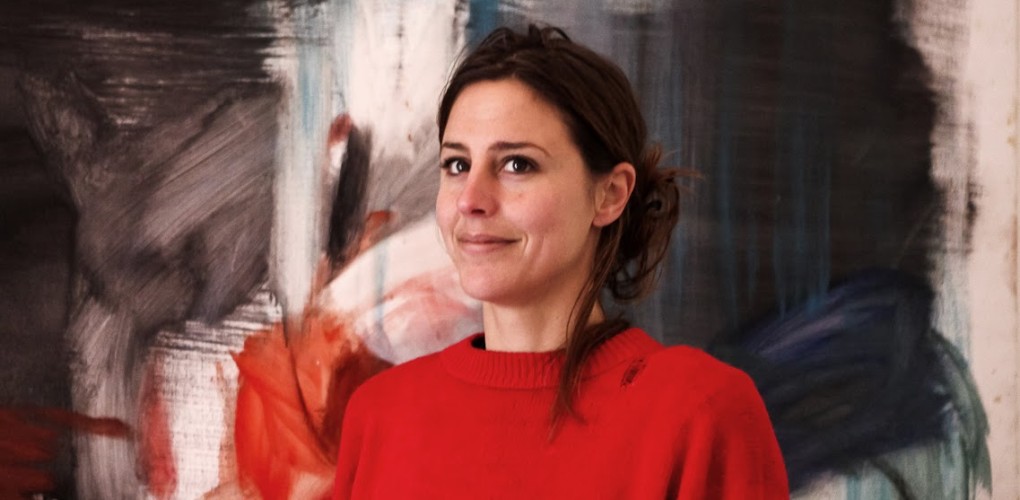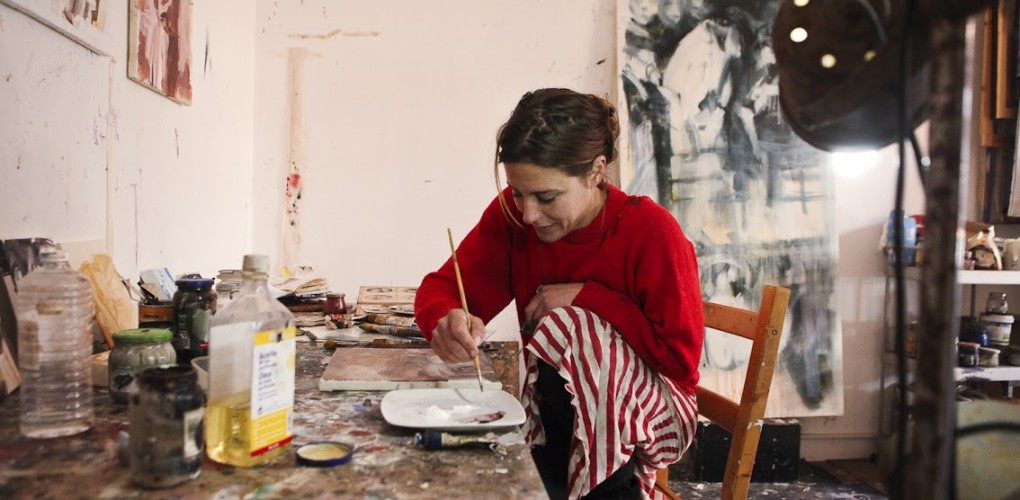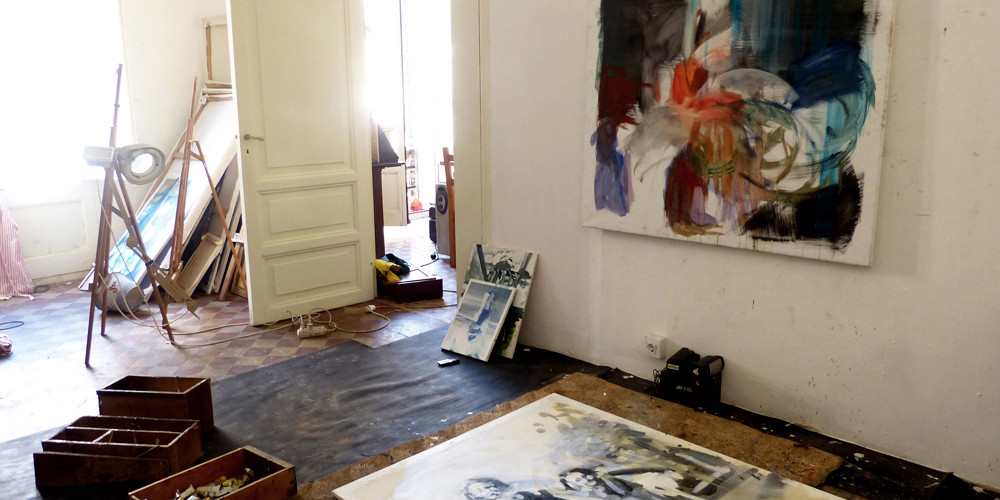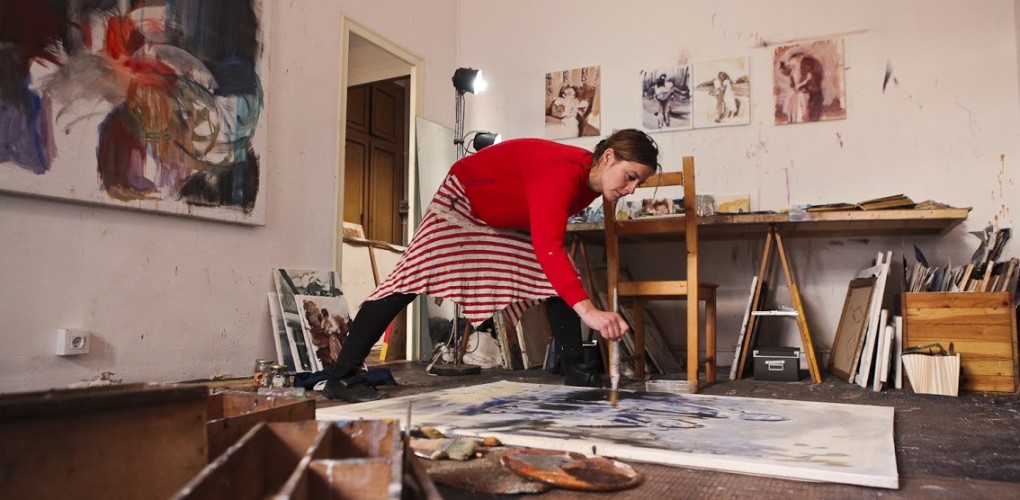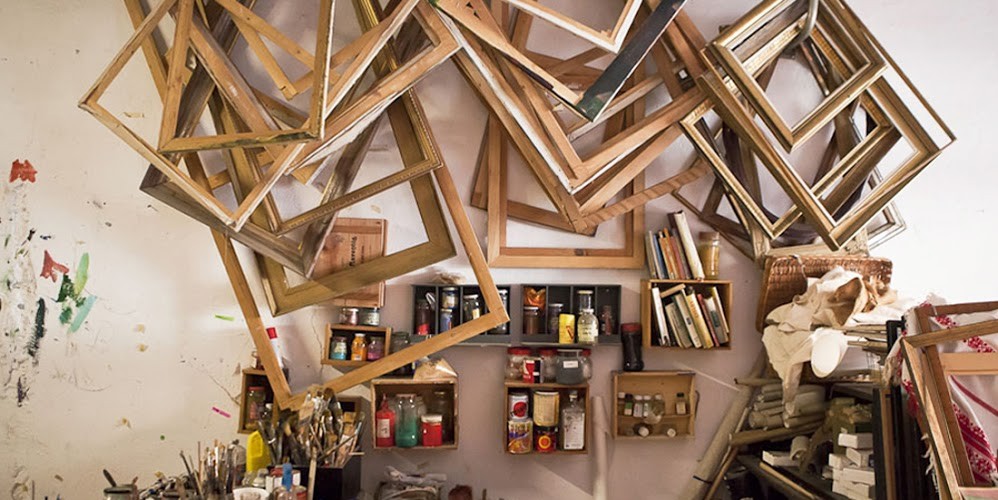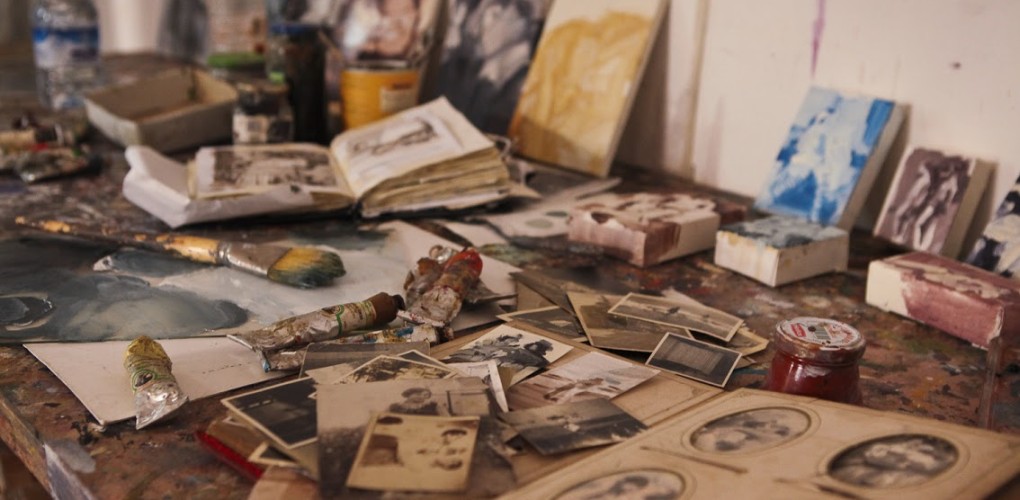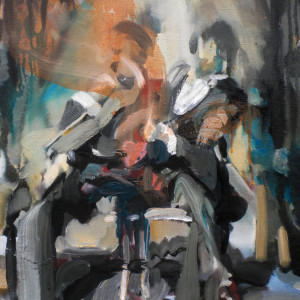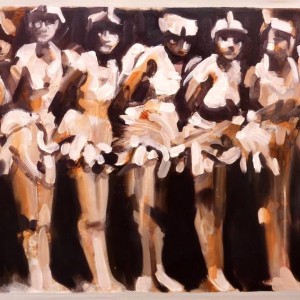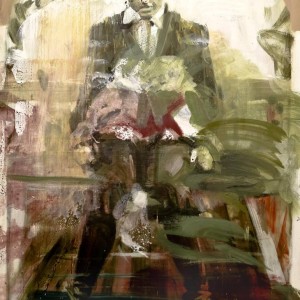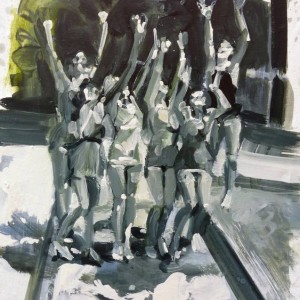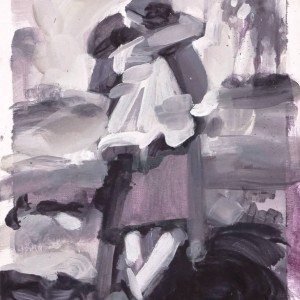Inside the Studio
 Anna McNeil
Anna McNeil
What are the major themes you pursue in your work?
The major themes in my work evoke the human condition. For me, making painting is a way of reflecting on observed or lived experience and communicating that. Through my practice I hope to create a dialogue, both internal and external, that in some way resonates with viewers. My recent work was inspired by thinking about memory as a dynamic and creative process that underpins who we are now, and can lead to our experience of the contemporary. I am interested in how this is reflected in the process of making my paintings, through the transformation of an image, the editing and embellishing processes of interpretation.
I am fascinated by how our constantly changing perception affects our reading of memory and visual information, the philosophical thinking process that accompanies the act of seeing, and how the creation of a sensation can often afford a more direct communication.
My current series of paintings reflect on ideas of autobiographical and emotional memory, considering themes of intimacy, unity and isolation in human relationships. The images show representations of people but they are not painted as portraits, rather as metaphors for the memory of a feeling. Through the elimination or distortion of specific representational details I hope to allude to the subject of an image without fully describing it. I want my paintings to display a sense of the personal, without dictating my own narrative; I would like them to act as a space where the viewer can make their own connections and form their own interpretations. Other themes in my work consider thoughts about impermanence and the flux of time, a response to rhythms and movement, or dualisms such as the paradoxes of lightness and weight.
What was the best advice given to you as an artist?
The best advice offered to me as an artist, indeed as a person, was given to me by my father. Whilst never an artist himself, he encouraged me to follow wholeheartedly what I love to do and what inspired me in life, and in the moments when I felt lost, in a matter of fact way he told me to ‘just keep painting.’
Once, I met an old woman at the bus stop on my way to college. She was a beautifully romantic vision, so delicate and bright with clear eyes that constantly watered. She told me a story of how when she was an art student, women were forbidden to draw from the life model, so she used to climb on the bins and peer into the studio through the window to make her sketches. She emphasized that the important thing is to be clear of what you want and find your own way of doing it. Her words have often resounded in my thoughts.
Prefer to work with music or in silence?
For the germination of an idea, for writing, considering the painting whilst trying to find out where to go with it, or to be intensely connected with the work, I need to be in silence. I often listen to classical music, such as Mozart to start or motivate and then Beethoven or Chopin in moments of intimacy. When the painting is in full swing I like to listen to rhythmic and melodic music such as Fats Waller or early Rhythm and Blues. Whilst cleaning my brushes and reflecting on what I have done at the end of a session I almost always listen to Billie Holiday.
If you could only have one piece of art in your life, what would it be?
A life with only one piece of art would be limited for me, I could not choose just one! I tend to have ‘moments’ of intense relations with artworks depending on my contemporary situation. In some cases these moments last many years and an artwork grows with me. My relationship with it changes, but it remains intimate with my experience. Van Gogh’s Starry night paintings have long captivated me, especially the earlier, modest but beautiful Starry night over the Rhone. I can profoundly relate to the honesty of the subjects in Egon Schiele’s watercolour figures, the relationships that are displayed between them, as well as with the artist. Also I have spent a long time living with an image of Schiele’s painting Autumn Trees 1911, which I find very powerful.
Every time I see a painting by Velazquez or El Greco or a portrait by Rembrandt, I fall desperately in love with it; for its depth and manifestation as a painting, how it has been made and the energy that has gone into its making, as much as for the expressive qualities of its subjects. My favourites are The Feast of Bacchus or Aesop by Velazquez and The Opening of the Fifth Seal or Baptism of Christ by El Greco. The Garden of Earthly Delights by Hieronymus Bosch can keep marvelling for quite some time! I would need a painting by Francis Bacon, such as Study after Velazquez’s Portrait of Pope Innocent X or one of his works from the late 1970’s -but I could not be left alone with only that!
Could I also have a Chagall to keep me buoyant? Currently I would like to share a moment with a painting called Together Inseparable by Kaye Donachie, Marlene Dumas’s ink works, Annie Lapin’s work, or Helen Verhoeven’s Careful Pretty. I recently had some really delightful time with some of Cecily Brown’s paintings. Beethoven’s Piano sonata Pathétique, or Chopin’s Minute Waltz are two works of art I would not want to live without.
Who are your favorite writers?
Italo Calvino and John Berger are sound favourites of mine. I am also greatly inspired by the writings of Albert Camus, Joseph Conrad and Chekov’s short stories, with their beautifully written poetic humanism. I sometimes dip into works by Marcel Proust or Fernando Pessoa, in small doses, for their romantic or post-romantic philosophical anecdotes. I also love the spirited reflections of Charles Baudelaire, the fantastical imagination of Edgar Allan Poe, and one of my favourite books ever is The Master and Margarita by Mikhail Bulgakov. I have always been fascinated with the metaphorical and cultural layering of folk tales. Recently I have been enthralled by the writings of the neurologist Oliver Sacks and am making my way through everything that he has written!
